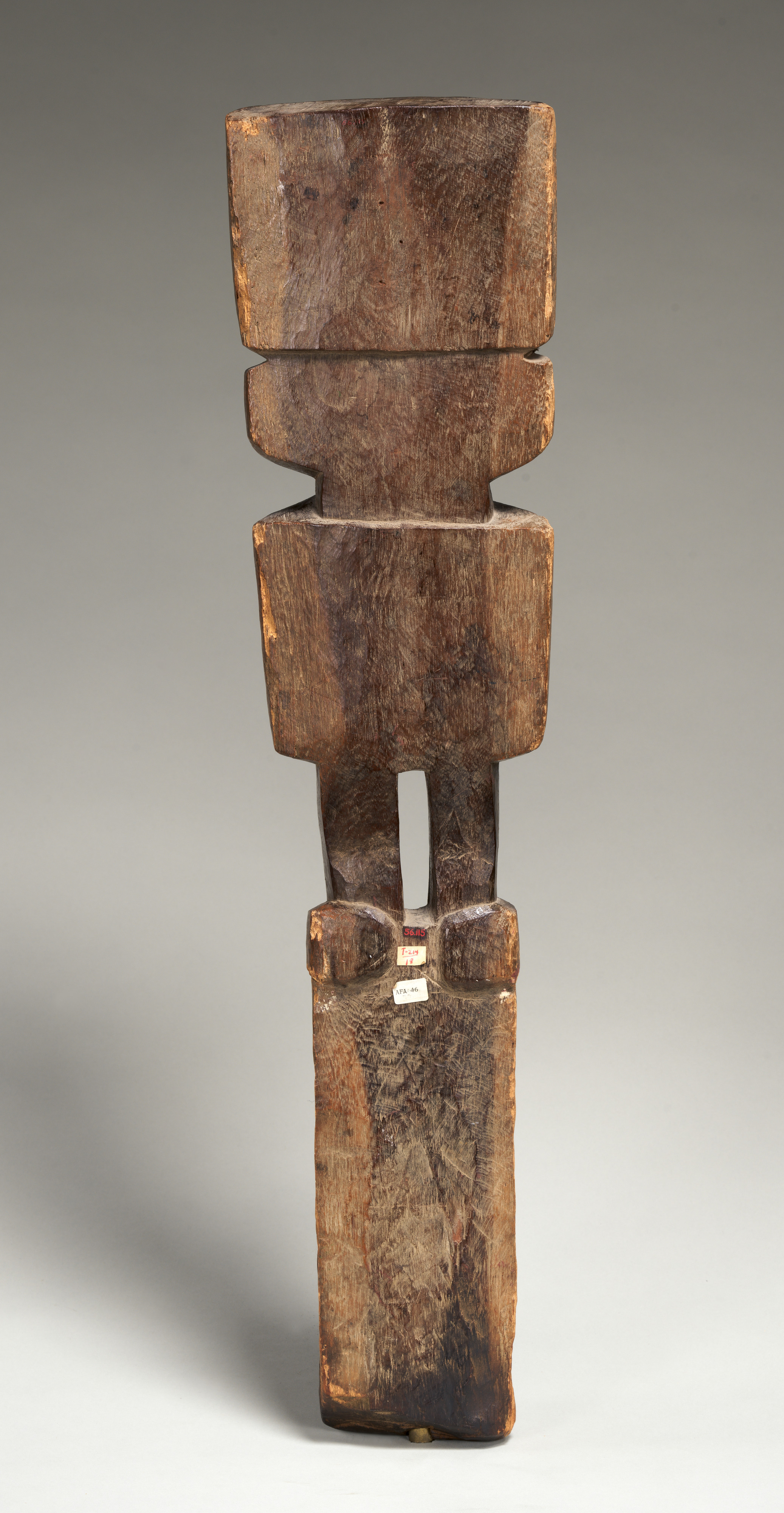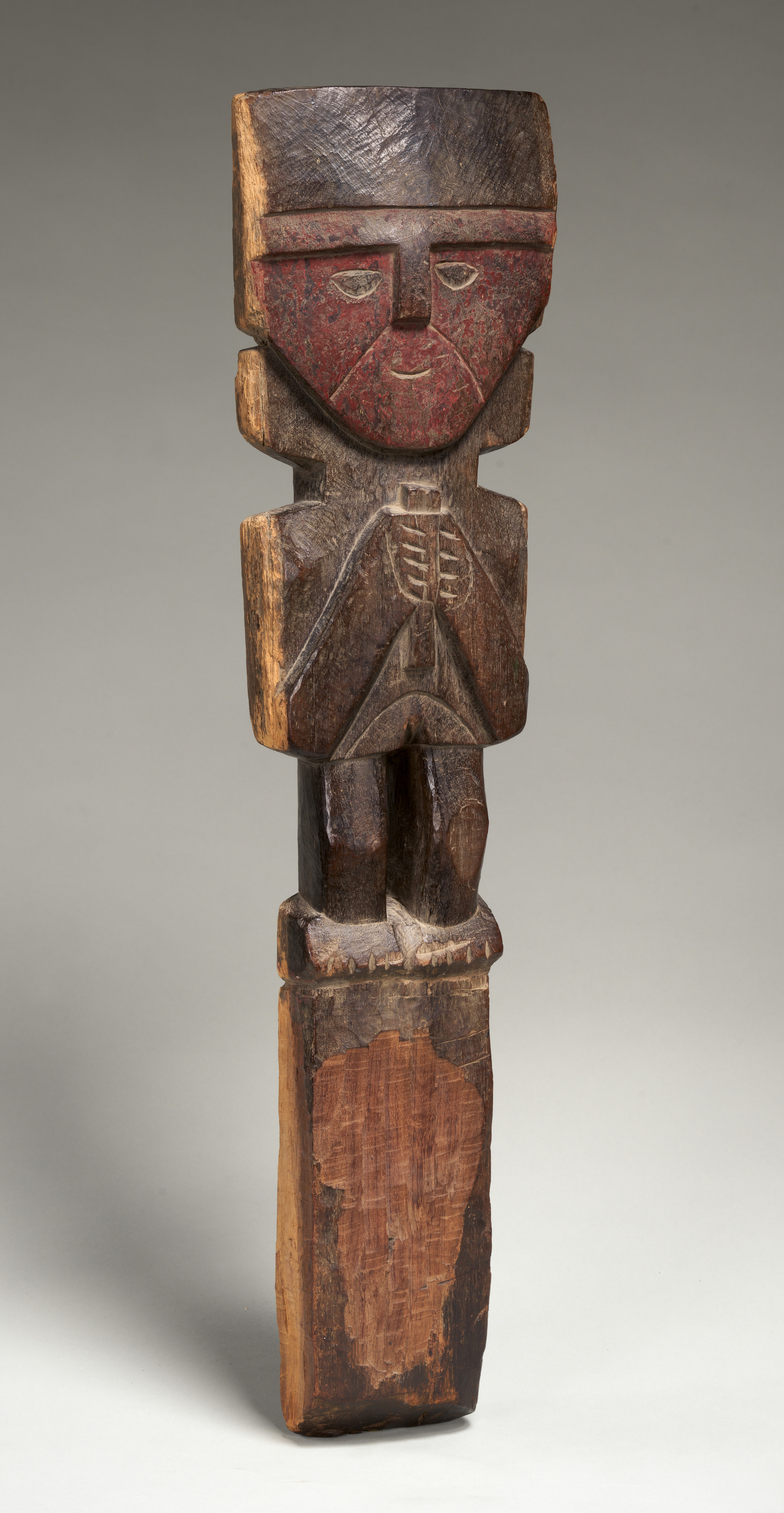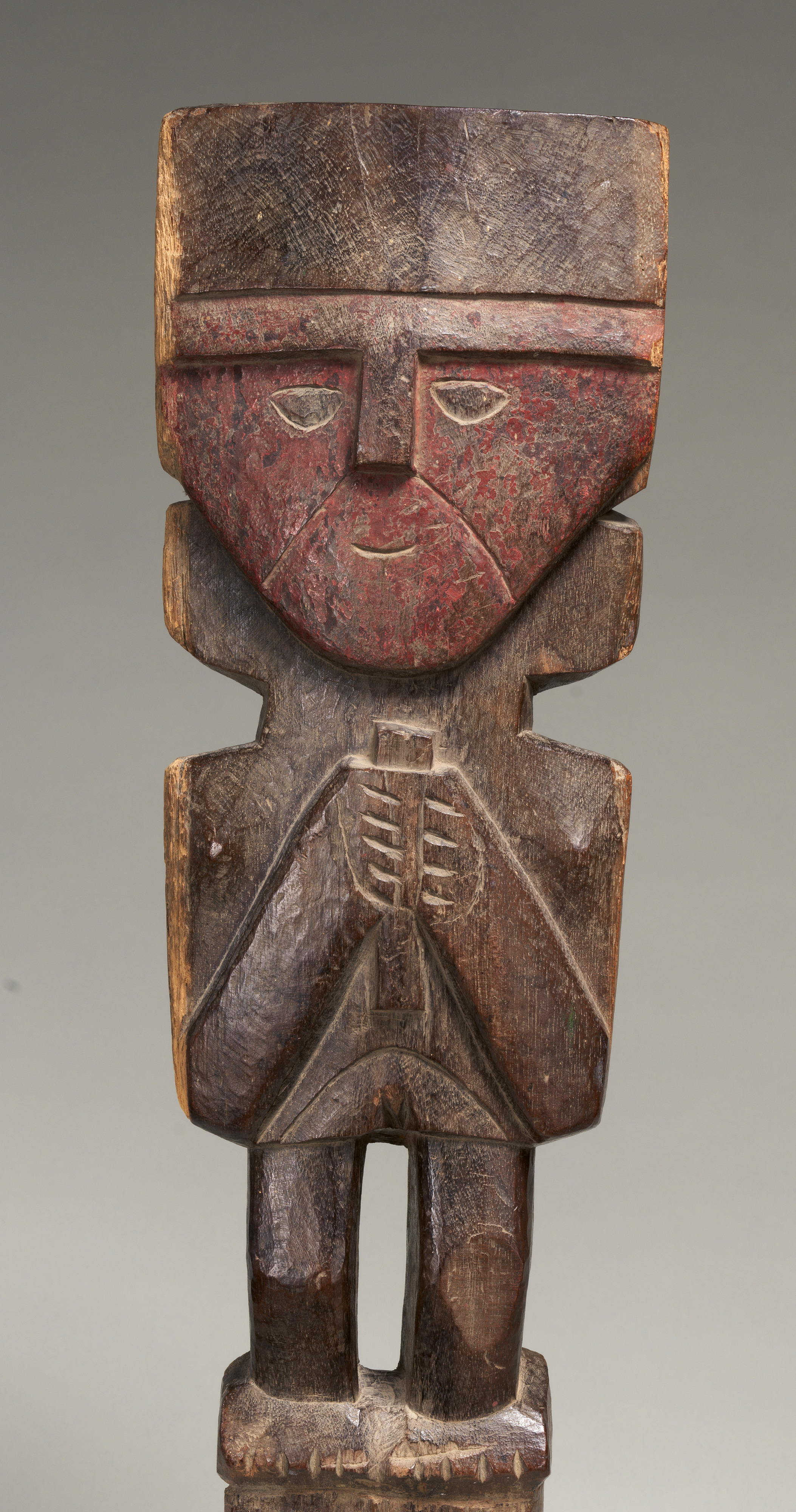Standing female figure
Not on view
This female figure clutching a cylindrical object to her chest stands on a post intended to be anchored to a floor or niche. The figure was carved in several planes: her large head, feet, forearms, hands, and the object she grasps, extend out from the rest of the body, and her legs, trunk, neck, and tab-like elements between the neck and head—evoking ear ornaments or possibly another costume element—are rendered on the recessive plane. The head is surmounted by a flat-topped covering, below which is a T-shaped brow-and-nose. The plane of her face was carved approximately one centimeter deeper, and her eyes, nasolabial folds, and mouth rendered through simple incisions. Although worn, a considerable amount of red pigment remains on her face. Her fingers and toes are indicated by shallow cuts, and an arc was carved above the genitals. Her breasts were rendered in low relief. The post—the section below the feet and the portion of the sculpture likely sunk into a wall or the ground—shows somewhat more wear than the figure and bears traces of a sandy soil or earthen plaster.
The back of the figure is simply carved, with little detail beyond the curve of the heels. In profile view, the slight backward tilt of the figure is more evident, as is the gentle bend in the knees. The rich patina of the figure is damaged on the proper right side of the figure (seen on the left of the photograph), and on the back (proper left).
The Chimú flourished between ca. A.D. 1000 and 1470, when they were conquered by the Incas. At their height, they dominated some 800 miles of Peru’s arid North Coast. The dry conditions of this coastal desert allows for the preservation of organic materials such as wood and cloth—materials that in most other parts of the Americas would not have survived centuries exposed to the elements or buried in the ground. Figural sculptures made of wood were installed at entrances to buildings on the North Coast, including the palaces of Chan Chan, the capital of the Chimú kingdom (see MMA.1979.206.774). Such figures have also been found in tombs, including a pair found in a burial dated to the Chimú-Inca period (A.D. 1470–1532) at Samanco, in the Nepeña Valley (Helmer 2015:fig. 4.22). The Nepeña figures, at 60 cm in height, are larger than the present example, and lack overtly gendered detailing, among other dissimilarities. Both the present example and the Nepeña examples, however, are shown grasping a cylindrical object, most likely a type of flute known as a quena. The Nepeña tomb also contained some 16 cane flutes.
Wood figures such as these were surely meant to protect the exclusive and sacred spaces of the Chimú elite and to celebrate eternally the rituals held within them. Similar, usually smaller, wood sculptures were also part of free-standing processional tableaux and architectural models deposited in burials (see, for example, Jackson, 2004; Uceda, 1999, 2011), perhaps for related purposes. These scenes convey a rich sense of the music and feasting that were at the heart of ancient Andean ritual practice.
Joanne Pillsbury, Andrall E. Pearson Curator of Ancient American Art, 2018
References and Further Reading
Campana Delgado, Cristóbal. Chan Chan del Chimo. Lima: Editorial Orus, 2006.
Helmer, Matthew. The Archaeology of an Ancient Seaside Town: Performance and Community at Samanco, Nepeña Valley, Peru (ca. 500-1 BC). Oxford: Archaeopress, 2015.
Jackson, Margaret. “The Chimú Sculptures of Huacas Tacaynamo and El Dragon, Moche Valley, Peru.” Latin American Antiquity vol. 15, No. 3 (2004), pp. 298-322.
Pillsbury, Joanne. “Imperial Radiance: Luxury Arts of the Incas and their Predecessors,” in Golden Kingdoms: Luxury Arts in the Ancient Americas, edited by Joanne Pillsbury, Timothy F. Potts, and Kim Richter, pp. 33-43. Los Angeles: The J. Paul Getty Museum, 2017.
Pillsbury, Joanne, Patricia Sarro, James Doyle, and Juliet Wiersema. Design for Eternity: Architectural Models from the Ancient Americas. New York: The Metropolitan Museum of Art, 2015.
Uceda, Santiago. “Esculturas en miniatura y una maqueta en madera: El culto a los muertos y a los ancestros en la época Chimú,” Beiträge zur Allgemeinen und Vergleichenden Archäologie 19 (1999), pp. 259-311.
Uceda, Santiago. “Las maquetas Chimú de las Huacas de la Luna y sus contextos,” in Modelando el mundo: Imágenes de la arquitectura precolombina, ed. Cecilia Pardo, pp. 144-163. Lima: Museo de Arte de Lima, 2011.
Due to rights restrictions, this image cannot be enlarged, viewed at full screen, or downloaded.
This artwork is meant to be viewed from right to left. Scroll left to view more.





